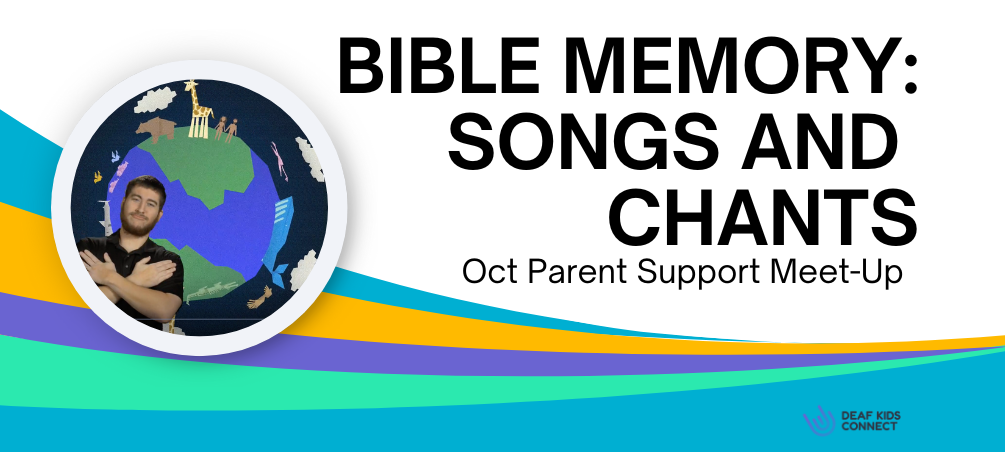Making the Bible Memorable with Deaf Kids
Welcome to the recap of our latest Parent Support Zoom!
As hearing parents, we remember the songs and stories that made the Bible feel real when we were kids. We want to give that same connection to our Deaf children, but adapted to their unique way of understanding. This month, we focused on three principles to help make Bible stories impactful for our Deaf children: rhythm, sign, and repetition.
Engaging Our Kids with Rhythm, Sign, and Repetition
Rhythm: Giving Stories a Flow
Adding rhythm to Bible stories helps them stick. Think about how, for hearing people, songs like Jesus Loves Me use rhythm and repetition to make ideas memorable—“Yes, Jesus loves me” is repeated to reinforce the message. Just as songs or poems use rhythm to make ideas stick, signing stories with a clear rhythm makes the story feel alive.
In our October Parent Support Zoom, we practiced creating rhythmic chants together. One simple example was chanting “God loves me, God loves you.” This rhythmic pattern, paired with repeated signs, helps the message come through in a way our kids can experience, not just memorize.
Sign: The Power of Visual Language
Using ASL isn’t just adding motions to a story; it’s connecting meaning with movement. For Deaf children, each sign in ASL is a complete idea, bringing depth and clarity to Bible stories.
For example, when we sign phrases like “God is good” or “Jesus loves you,” the meaning is clear and direct. In our meeting, we practiced creating chants where ASL signs reinforce key messages. Signing “two by two” or “God loves you” with visual emphasis helps children grasp the story in a way that feels personal and memorable.
Repetition: Reinforcing Key Ideas
Repetition is crucial in making Bible stories stick. Chants and repeated signs help our kids connect with messages on a deeper level, much like a favorite song that gets stuck in their minds.
In ASL, repeating these core ideas reinforces the story’s main message in a way that’s easy to follow and remember. This internal repetition of simple phrases highlights important parts of the story, helping children connect with and retain its meaning.
Bringing It All Together: The Story of Noah’s Ark
As an example, Sharon Bryant shared the story of Noah’s Ark. Using rhythm, sign, and repetition, we can make this story visually engaging and easy to remember for our kids. Watch the Deaf Missions video of Noah’s Ark below, which shows the power of signing the “two by two” movement of animals, adding rhythmic visuals of rain, and repeating simple phrases to help children grasp the story.
Video courtesy of Deaf Missions.
Applying These Tools at Home
We encourage you to try adding rhythm, sign, and repetition to your own family’s Bible study. Whether it’s with simple chants, rhythmic motions, or watching videos like the one above, these elements can bring a new level of engagement to your Bible study time.
Thank you for joining us on this journey to help our children experience God’s love and truth in a way they can truly connect with. Let’s continue to walk this path together and support each other in nurturing faith that lasts a lifetime.
